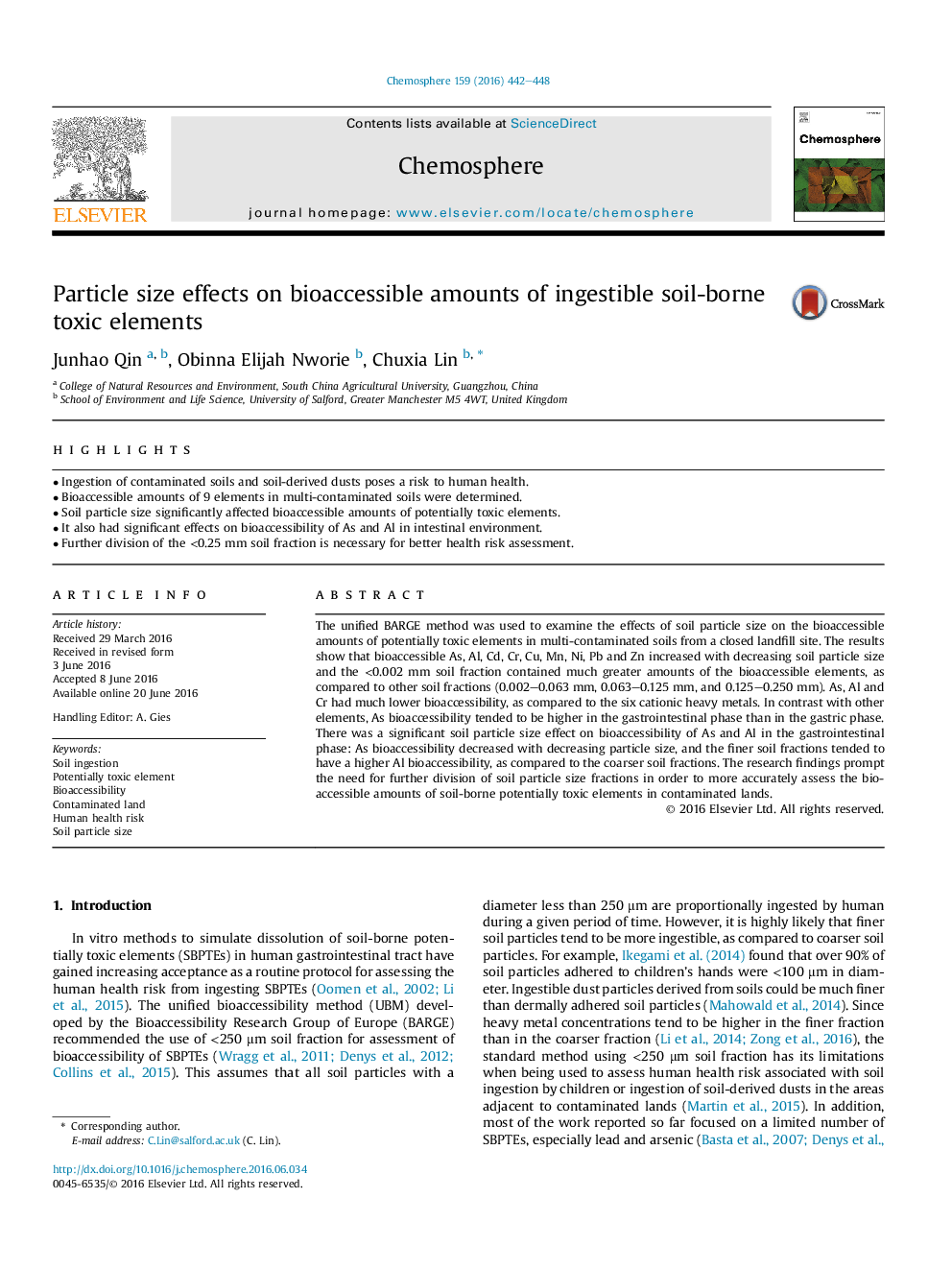| Article ID | Journal | Published Year | Pages | File Type |
|---|---|---|---|---|
| 4407448 | Chemosphere | 2016 | 7 Pages |
•Ingestion of contaminated soils and soil-derived dusts poses a risk to human health.•Bioaccessible amounts of 9 elements in multi-contaminated soils were determined.•Soil particle size significantly affected bioaccessible amounts of potentially toxic elements.•It also had significant effects on bioaccessibility of As and Al in intestinal environment.•Further division of the <0.25 mm soil fraction is necessary for better health risk assessment.
The unified BARGE method was used to examine the effects of soil particle size on the bioaccessible amounts of potentially toxic elements in multi-contaminated soils from a closed landfill site. The results show that bioaccessible As, Al, Cd, Cr, Cu, Mn, Ni, Pb and Zn increased with decreasing soil particle size and the <0.002 mm soil fraction contained much greater amounts of the bioaccessible elements, as compared to other soil fractions (0.002–0.063 mm, 0.063–0.125 mm, and 0.125–0.250 mm). As, Al and Cr had much lower bioaccessibility, as compared to the six cationic heavy metals. In contrast with other elements, As bioaccessibility tended to be higher in the gastrointestinal phase than in the gastric phase. There was a significant soil particle size effect on bioaccessibility of As and Al in the gastrointestinal phase: As bioaccessibility decreased with decreasing particle size, and the finer soil fractions tended to have a higher Al bioaccessibility, as compared to the coarser soil fractions. The research findings prompt the need for further division of soil particle size fractions in order to more accurately assess the bioaccessible amounts of soil-borne potentially toxic elements in contaminated lands.
